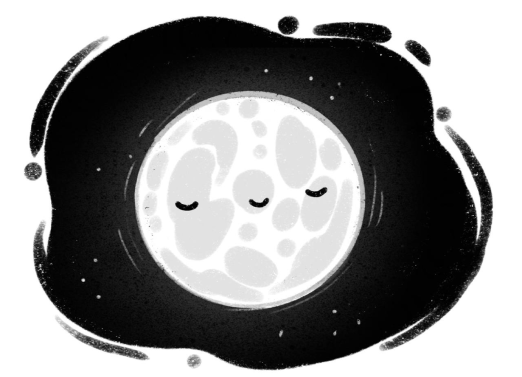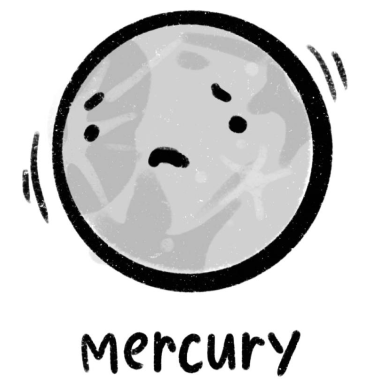Cosmic odyssey of the future: mysteries and possibilities

Ladies and gentlemen, we invite you to embark on a celestial journey across the enigmatic realms of the boundless cosmos. Please take your seats aboard the spaceship “The Global Technology” and fasten your seatbelts. The countdown begins: three, two, one… Liftoff!
As our spacecraft ascends, you’ll be treated to exotic drinks infused with cosmic plasma and authentic astronaut cuisine. We hope these delicacies will help you find comfort amid the vastness of this cosmic ocean.
Out there, beyond Earth, everything is different — no gravity, no familiar atmosphere. It’s a realm of the unpredictable future, where the unknown awaits. Perhaps, upon returning from this odyssey, you might embody a character straight out of a science fiction novel. After all, humanity is still evolving. Remember the Kelly twins, those famous astronauts? One spent a year in space while the other remained on Earth. Upon returning, the space-bound twin discovered that even his gut bacteria had changed. Prolonged exposure to microgravity has profound effects on the human body, requiring months — or even years — to fully recover. But these are only temporary changes.
Evolution demands time, and one day, the cosmos might reshape our habits, culture, and technologies. Could science fiction have been right all along? Might we become delicate, ethereal beings adapted to the vastness of space? Or will scientists discover ways to make us stronger and more resilient?
And what if, during our cosmic odyssey, we encounter alien life forms? The mere possibility of their existence continues to captivate both everyday dreamers and seasoned scientists. Occasionally, Earth receives mysterious signals from space — enigmatic whispers that spark endless questions about their origins.
Most of the signals we pick up from deep space are nothing more than cosmic chatter — background noise from stars, planets, galaxies, nebulae, and black holes. Yet, amidst this symphony of the universe, there are occasional signals that tantalizingly hint at alien communication.
One of the most famous examples is the “Wow!” signal, recorded by Dr. Jerry Ehman on August 15, 1977, while he was working with the Big Ear radio telescope in Ohio. Dr. Ehman, listening for extraterrestrial signals as part of the SETI project, was startled to detect an exceptionally powerful signal. It was so astonishing that he circled it on the printout and scribbled “Wow!” next to it, giving the mysterious transmission its now-iconic name.
The signal, coded as 6EQUJ5, represented the changing intensity over time—each line of the printout corresponded to 12 seconds. However, there was a problem: the Big Ear telescope had two feed horns, and no one knows which one captured the signal. Despite repeated attempts, Ehman was never able to detect it again.
Fast forward to 2019, when astronomers discovered another “intriguing signal” originating from Proxima Centauri, the closest star to our Sun. This signal came through as a narrow beam of radio waves at a frequency of 980 MHz — a band free from interference by satellites or spacecraft. Detected only once, the signal was as rare and astonishing as finding an ancient artifact in a landfill.
As The Guardian reported, this was considered the first serious candidate for extraterrestrial communication since the “Wow!” signal. However, as with all such findings, skepticism prevailed—scientists could not rule out the possibility of the signal being of Earthly origin.
If we were to encounter an alien during our space odyssey, we’d have to ask the burning question: Are they ignoring us on purpose? Perhaps, amidst the vast void of the cosmos, they simply don’t find us interesting — or worse, worth the effort to communicate.
Ladies and gentlemen, if you glance out the windows of our spacecraft, you’ll notice a colossal, enigmatic asteroid hurtling through the void. Meet Apophis, named after the ancient Egyptian serpent god of chaos and destruction, who sought to annihilate all life.
The name wasn’t chosen by chance. According to scientists, in the year 2068, Apophis could collide with Earth, unleashing an impact with the staggering force of 506 megatons. For context, that’s the equivalent of 43,000 atomic bombs — the same type as “Little Boy,” which devastated Hiroshima during World War II. It’s a cosmic threat of apocalyptic proportions, a chilling reminder of the unpredictable universe we inhabit.

So, while we admire this celestial giant from afar, let’s agree not to bring it home as a souvenir. Instead, let’s hope that humanity’s brightest minds will find a way to protect Earth from this catastrophic menace over the next 49 years. For now, cross your fingers and marvel at the might of Apophis, the snake god’s asteroid emissary.
And Off We Go: Leaving the Predator Asteroid to Reflect on Its Behavior.
As we continue our journey, waving a reluctant goodbye to the predatory Apophis, it’s worth pondering: have you ever felt the influence of space in your daily life? Don’t rush your answer — space is a veritable generator of innovation, birthing countless technologies to help us understand its mysteries. From satellite communication to GPS navigation, space exploration has given us tools we use every day, even for something as simple as finding the nearest coffee shop.

From a philosophical perspective, space offers endless puzzles for our minds. The vastness of the universe, the possibility of alien civilizations, the enigmas of black holes, and the mysterious dark matter compel us to confront the limits of human understanding and the role of chance in this grand cosmic drama.
Space also reshapes how we perceive time and distance. Einstein’s revelation that time and space are interwoven and mutable has inspired not only scientists but also philosophers, giving rise to entire schools of thought examining how these cosmic phenomena influence our daily lives.
And let’s not forget how space inspires our culture. Books, films, and art constantly offer us cosmic adventures and new worlds, helping us explore not only the unknown but also ourselves. Through these creative endeavors, we gain deeper insights into our responsibilities to nature, future generations, and the planet we call home.
Space has always been humanity’s muse, but its impact runs far deeper than breathtaking views of the stars.
Attention, Attention! Right Ahead: The Moon!
Currently barren and lonely, the Moon might not be so desolate by 2030. Humans are poised to return, with NASA and SpaceX leading the charge — though delays are almost inevitable. But fear not, the Chinese and Roscosmos are ready to swoop in like neighbors eager to claim your parking spot the moment you hesitate.

China is investing in space exploration as passionately as in the latest iPhone, while Russia continues to craft the world’s best rocket engines. Together, they’re planning a Lunar Station—not just for selfies but to claim new lunar territories. Though the Moon isn’t a moneymaker yet, it might offer water, minerals, and even lunar shopping malls by 2081.
Speaking of water, it’s already there, though currently locked in ice. To quench a thirst, you’d first need to melt it. And there’s a lot of it. Scientists estimate that lunar ice could yield over 600 million tons of water. For comparison, Earth’s water reserves weigh about 1,300 million billion tons. While these astronomical figures are hard to grasp, the takeaway is simple: even if Earth faces a severe drought, lunar water could keep humanity alive — quite the cosmic backup plan.
But for now, as the Moon awaits NASA’s return, let’s press onward and allow our celestial introvert to bask in its solitude, shining down as the Solar System’s most enigmatic light.
The spacecraft, having swung around a couple of comets and raced past brilliant constellations, is now heading straight for the Red Planet—Mars.
Mars represents a whole new level of challenge, akin to attempting to cook borscht in zero gravity. Why? While Mars has an atmosphere, it’s incredibly thin, making it tricky to land a spacecraft safely.
Using parachutes alone for a soft landing is impossible because the atmosphere isn’t dense enough to create the necessary drag. To tackle this, NASA is testing the Supersonic Inflatable Aerodynamic Decelerator (SIAD) — a device that resembles a “flying saucer.” This innovative technology is designed to attach to descent vehicles, ensuring deceleration in Mars’ thin atmosphere and a smoother landing.

A bigger issue for Martian missions is cosmic radiation, akin to standing next to a miniature Chernobyl reactor. Current safety protocols suggest that a trip to Mars might only be survivable once due to radiation exposure. But worry not, our spacecraft is equipped with advanced anti-radiation shields, ensuring a safe journey for us.
For astronauts and SpaceX enthusiasts, however, radiation protection remains a key hurdle. Without addressing this, plans for Martian colonies remain science fiction.
And then there’s politics. Who gets to go to Mars? Decisions will likely depend not only on physical qualifications but also on political agendas. Space exploration, as it turns out, is as much about diplomacy as it is about technology.
Colonizing Mars is staggeringly expensive. SpaceX estimates the cost of sending a single person could reach $10 billion. Building a spacecraft capable of carrying a crew and the necessary supplies is a monumental task. Current automated missions to Mars are impressive, but a crewed mission would require a spacecraft capable of carrying 100 times more cargo.
Distance is another obstacle. Imagine two runners on different lanes of a track — Mars is on the outer, longer lane, and Earth is on the shorter, inner lane. As they orbit the Sun, the distance between them fluctuates from 55 million to 100 million kilometers. They align closely only once every 26 months, making timely rescues or emergency supplies almost impossible. For survival, Martian colonies would need guaranteed autonomy for at least three Earth years.
Mars presents extreme conditions: sharp temperature shifts, meteorite threats, and relentless dust storms. The colony would need robust systems to handle these, alongside life support capable of sustaining human life.
The planet’s gravity is just 40% of Earth’s, which poses long-term health risks. Blood tends to pool in the upper body, causing tissue swelling in the neck area. On the bright side, lower gravity means settlers could leap over rocks the height of a three-story building without breaking a sweat — or a leg.
But gravity isn’t the only challenge. Mars lacks a stable magnetic field, exposing inhabitants to increased radiation risks. Combined with the effects of long-term weightlessness, disrupted sleep cycles, inadequate nutrition, and potential illnesses like decompression sickness, Parkinson’s, or orthostatic intolerance, the first Martian settlers face a daunting list of challenges.
Despite these challenges, Elon Musk, Mars’ most prominent advocate, remains optimistic. He predicts human landings on Mars as early as 2028, though many experts believe 2040 is more realistic. Before tackling the Red Planet, humanity will likely practice on the Moon — a friendlier, albeit still challenging, host for our extraterrestrial ambitions.
Swinging around Mars and making a loop, we now approach Venus — a planet where landing is about as practical as trying to barbecue in an oven.
The pressure and temperature on Venus are so extreme that even robots, the likely candidates for future missions, would probably “scratch their heads” and find creative excuses to stay at home.
In essence, Venus is a colossal greenhouse. While this might sound ideal for cultivating vegetables, don’t let the idea fool you — gardening on Venus would likely end with your crops incinerated before you even had a chance to harvest. But science thrives on impossibilities, and one day, researchers might just figure out how to terraform Venus into a livable space. Who knows, perhaps one of you will be packing your bags for a new home on Venus someday.

If you’re someone who struggles with time management, Venus might be your dream destination. A single day on Venus lasts longer than a full Earth year. If even that’s not enough time to conquer your deadlines, you might need to reevaluate your productivity skills!
But beware — the planet’s atmosphere also features acid rain composed of sulfuric acid, which isn’t exactly the kind of weather you’d want to experience.
Despite the challenges, Venus continues to intrigue scientists and dreamers alike. If humanity can one day unlock the secrets of this hostile world, Venus might transform from a hellish greenhouse into a thriving colony. Until then, let’s leave it to the acid rain and the mysteries it holds.
Attention! We’re steering our starship toward one of the most stunning planets in the Solar System—Saturn.
Studying this celestial giant, which looks like a cosmic hat with broad, elegant brims, is a major priority for scientists. But it’s not just about the dream of strolling along Saturn’s rings (although who wouldn’t love that idea?). The real focus lies on Saturn’s largest moon, Titan, which contains vast reserves of hydrocarbons — the very substances powering much of our modern technology and electronics.
Reaching Titan is no small feat. NASA’s Dragonfly mission, a spacecraft resembling a cosmic helicopter, is set to land on Titan in 2034. The journey will take over five years, with the landing planned near the Selk Crater in a region known as Shangri-La. According to scientists, this area is a “scientifically fascinating zone” teeming with potential discoveries.
One of the most exciting reasons to explore Titan is the possibility of discovering living microorganisms. Thanks to its hydrocarbon-rich environment, Titan could potentially harbor some form of life, albeit quite different from what we know on Earth.

As for Saturn itself, there’s a bittersweet truth about its iconic rings: they’re disappearing. American scientists have discovered that Saturn’s rings are “melting” at an astonishing rate, with their remaining lifespan estimated at just 100 to 300 million years. The rings, composed of water ice and dust particles, are gradually being pulled in by Saturn’s magnetic field. One day, they’ll dissolve like a snowman under the warmth of spring sunlight.
Before we bid farewell to this cosmic masterpiece, let’s not forget that Saturn experiences vividly distinct seasons. However, there’s a catch — each season lasts more than seven Earth years. Imagine planning a seven-year-long winter getaway or summer retreat!
For now, though, we can marvel at Saturn, the Lord of the Rings, in all its grandeur. Let’s pause a little longer to soak in its beauty before our ship ventures further into the mysteries of the cosmos.
Our spacecraft is making a brief stop at Mercury—one of the Solar System’s smallest yet most intriguing planets, which might not be around forever.
Scientists have observed that Mercury, Earth’s petite neighbor, is slightly off-course from its original orbit. If this continues, it could eventually drift out of the Solar System entirely, much like a lone traveler leaving a party. Alternatively, Mercury might meet a fiery end by being consumed by the Sun, especially if our star expands into a gas giant. Either way, the planet’s fate is dramatic and potentially catastrophic for Earth, should the Sun decide to devour it. But don’t worry — we’ve got a generous seven billion years to make the most of our lives!
Speaking of doomed planets, let’s talk about WASP-18b, located in the Phoenix constellation, 330 light-years away. This “hot Jupiter” orbits its star so closely that a single year there lasts just 23 Earth hours. At ten times the mass of Jupiter, WASP-18b is rapidly aging its star — like speeding up the clock on a cosmic time bomb. The star could fade prematurely, taking the planet with it. A stark reminder of how precarious planetary futures can be.
Back to Mercury. While the planet contemplates its cosmic departure, scientists are busy brainstorming bold ideas for colonization. One proposal is to build a city in Mercury’s lava tubes — subterranean tunnels formed by ancient volcanic activity. Surprisingly, these tubes could offer comfortable conditions, maintaining a cozy temperature of around 22°C while shielding inhabitants from dangerous radiation. Picture watching your favorite series underground, safe from solar storms — sounds futuristic, doesn’t it?

Another concept involves mobile settlements that would continuously travel along Mercury’s surface. By staying on the border between night and day, these roving homes would “chase the twilight,” avoiding extreme temperatures. With a Mercurian day lasting 176 Earth days, you’d have plenty of time to enjoy the scenery.
If that doesn’t sound appealing, consider the possibility of settlements in the shadowed craters of Mercury’s north pole. These craters are cold enough to harbor water ice, which could serve as a precious resource for future explorers. Solar panels installed along the crater rims would provide power, making it an ideal location for survivalists who love ice-cold living.
The upcoming Mercury Scout mission aims to map Mercury’s surface in high resolution, down to one meter. Not only will this produce crystal-clear planetary selfies, but it will also help identify ice deposits hidden in shadowed regions. Imagine Mercury rebranded as an “icy hot” destination — a mix of fiery days and frosty craters.
So while Mercury’s fate remains uncertain, humanity’s plans for the planet are nothing short of ambitious. Whether it’s underground cities, mobile habitats, or icy hideouts, the smallest planet in the Solar System might just become a hot (or cold!) destination for future spacefarers.
Directly ahead, we have Jupiter — a planet that commands respect not just for its size but for its future cosmic destiny.
Jupiter isn’t just a gas giant with a massive ego; it’s a planet with a remarkable future. When our Sun eventually burns out and collapses into a white dwarf, a dramatic cosmic event will occur. A colossal explosion will release vast amounts of hydrogen gas, and Jupiter, with its unparalleled gravitational pull, will attract this hydrogen. Through a thermonuclear process, Jupiter could ignite into a star, becoming the new source of warmth and light for the Solar System’s remaining inhabitants.
While Jupiter shines brightly as a future star, it’s more than 70 moons will face a far grimmer fate. Once lush with potential, these celestial bodies will become scorched, barren wastelands, unable to support life. For now, though, Jupiter’s moons remain treasure troves of intrigue, catching the attention of none other than Elon Musk and his ambitious space plans.
One of Jupiter’s standout moons is Callisto, the second-largest after Ganymede. Often overshadowed by its “big brother,” Callisto is a fascinating cosmic entity. Roughly half ice and half rock, it’s like a celestial pizza with two toppings — one icy, the other rocky. When scientists examined Callisto’s surface using spectroscopy (essentially a cosmic “peek through the window”), they discovered carbon dioxide and organic compounds. Could Callisto be a cosmic buffet for future explorers? It’s a question worth investigating.

Aside from its potential to become a second Sun, Jupiter already plays a vital role in protecting Earth. Its immense gravitational pull acts as a cosmic shield, diverting comets and asteroids that might otherwise pose a threat to our planet. It’s like having a celestial bouncer ensuring Earth stays safe from unwanted cosmic guests.
Leaving the Mysteries of the Solar System Behind, Our Spaceship Now Approaches Earth’s Orbit, Home to a Record 19 Humans!

Nineteen people in space! That’s almost enough for a small neighborhood meeting — or to start worrying about space overcrowding and the urgent need for a cosmic psychologist. But for now, there’s no need to panic; instead, let’s peek through the spaceship windows and observe the daily adventures of astronauts currently floating in space.
Living in space is no walk in the park — or, rather, no float in the park. One of the biggest challenges? Sleep. In microgravity, astronauts secure themselves to walls in sleeping bags, a practice resembling a zero-gravity version of “sleeping on your feet.” Most astronauts end up in the fetal position, which feels most natural in a weightless environment and prevents them from drifting aimlessly.
Meals in space are equally quirky. Forget salt shakers or pepper mills — seasoning your food with traditional spices in zero gravity could result in a floating peppercorn fiasco. Instead, astronauts use liquid salt solutions and sauces like mustard or ketchup, which have become cosmic favorites. Meals come pre-packaged in tins and pouches and are reheated with warm water—think of it as an intergalactic version of instant ramen.
Showers? Forget it. On the ISS, astronauts use wet wipes and moist towels for cleaning themselves — an experience akin to scrubbing a stubborn pan. Staying fit is a top priority, with astronauts dedicating 2.5 hours daily to exercise. They use specialized equipment like treadmills, stationary bikes, and even machines that simulate gravity, ensuring they maintain their muscle and bone mass in microgravity.
Free time in space is a mix of entertainment and awe. Astronauts capture breathtaking photos of Earth, enjoy movies, music, and books, and sometimes call their loved ones back home — not via cell towers but through satellite internet. The ISS is equipped with Wi-Fi connected to satellites like NASA’s TDRS, enabling astronauts to make video calls using Skype or send quick text messages in emergencies.
Packing for space comes with its own restrictions. Each astronaut aboard the Soyuz spacecraft is allowed 1.5 kilograms of personal items. Most bring family photos, small keepsakes, or books, which are often fastened to their cabin walls. Musical instruments, art supplies, and sentimental items are also popular. For instance, Alexei Leonov carried pencils to sketch, while NASA astronaut Nicole Stott brought watercolor paints. Even plush toys sometimes make the journey — keeping astronauts company during their cosmic sleep.
Speaking of technology, the Internet isn’t just for Earthlings. Artificial intelligence is steadily becoming a vital component of space missions, managing communication, research, and even decision-making in emergencies. It’s fascinating to see how AI bridges the gap between Earth and the stars, contributing to the safety and efficiency of space exploration.
As we hover above Earth’s orbit, marvel at the remarkable combination of human ingenuity, technological progress, and adventurous spirit that keeps our species reaching for the stars — one sleeping bag, ketchup packet, and satellite call at a time.
While we on Earth grapple with wars and pandemics, space exploration is already charting ambitious plans for the next 60 years. Buckle up, because we’re about to peek into the future of the cosmos. Okay, Space, show us what’s next!
Without leaving the comfort of our spaceship, we find ourselves in the bustling nerve center of NASA — the National Aeronautics and Space Administration — where the staff are deeply engrossed in something very important.

Looking closer, we discover that they’re working on ways to explore distant exoplanets. Russian scientist Vyacheslav Turyshev is championing a bold idea: using the Sun as a gravitational lens to magnify distant planets, potentially revealing continents, and perhaps even alien cities. Imagine being able to observe another Earth in such detail — it’s like swapping your binoculars for a Hubble telescope!
Meanwhile, billionaire entrepreneur Yuri Milner is leading the charge on the Breakthrough Starshot project. This audacious initiative involves deploying a swarm of tiny probes equipped with light sails. These probes would be propelled by powerful lasers, accelerating them to a fraction of the speed of light, enabling them to reach our nearest star system, Alpha Centauri, in just 20 years.
But there’s a hitch — none of the required technology, from ultra-durable lasers to resilient sails and advanced microchips, is quite ready yet. These hurdles make the project a distant dream for now. However, as history has shown, today’s science fiction often becomes tomorrow’s reality.
What’s clear is that humanity’s desire to explore, innovate, and dream is as boundless as the universe itself. Even as the challenges seem insurmountable, the possibility of discovering life — or at least understanding how our universe works — drives us forward.
The future is out there, and as we glide through the cosmos, we’re reminded of one thing: no star is too far, no dream too big. Let’s keep reaching for the stars — whether with gravitational lenses or fleets of tiny star-bound probes.
Okay, Space, what about the craziest ideas buzzing around the brilliant minds of our scientists for the future of the cosmos?

How about the concept of a space hotel orbiting Earth? With the International Space Station running low on space, some visionary folks are planning for a luxurious alternative. Imagine drifting in zero gravity while gazing out of massive panoramic windows at our beautiful blue planet. The company Voyager Station is gearing up to start construction on such a space hotel by 2025. If all goes well, soon we might have a “cosmic all-inclusive” destination.
China isn’t lagging behind. By 2035, it aims to build a solar power station in orbit — essentially a solar panel on asteroids. The challenge, though, lies in transmitting that energy to Earth. Should they use laser beams (potentially capable of zapping an entire city) or construct a space power cord? This problem segues into another wild idea: the space elevator.
The concept is simple: anchor a super-strong cable to a satellite, and you’ve got a rocket-free way to lift cargo into orbit. But there’s a catch: the cable would need to be as strong as a superhero’s suit, so this remains in the realm of imagination — for now.
Another jaw-dropping proposal is the electromagnetic space catapult. Picture a giant tube built along the equator, vacuum-sealed to eliminate air resistance. Using electromagnetic forces, spacecraft could be accelerated to escape velocity, essentially flinging them into orbit like cosmic slingshots. Theoretically, this method could cut costs and revolutionize space transport.
But reality isn’t so forgiving. The tube would need to be over 500 km long, with a nearby nuclear power plant to fuel the massive energy demands. And don’t get too excited about passenger flights — any human launched at that speed would arrive in space as little more than a puddle of liquid. Still, it could be a game-changer for cargo.
Time is the ultimate enemy of space travel. Scientists like Vyacheslav Turyshev are proposing solar sails — think of spacecraft as yachts, gliding through space on light waves. Others are working on nuclear engines, promising speeds that would make interplanetary travel faster than saying “Tsiolkovsky.” And let’s not forget wormholes, the holy grail of faster-than-light travel. Should we crack that code, zipping across the galaxy could become as casual as catching a commuter train.
For now, our stellar voyage aboard “The Global Technology” spaceship is drawing to a close. Named after the most-read technology magazine, our vessel will soon touch down at its point of origin — Earth.
As we approach the landing pad, take a moment to reflect: what inspired you most on this cosmic adventure? Was it the daring space concepts, the mysteries of distant planets, or the limitless potential of human ingenuity?
Thank you for flying with us on this journey through the stars. Until next time, explorers.
Three… Two… One… Welcome back to Earth.
We illuminate scientific horizons with an intensity that rivals a laser.
Thank you!




